Among the few novelties seen before the SIHH, Roger Dubuis strikes hard: he presents an exceptional complication which revolutionizes the solution brought by the tourbillon!
A device never seen in this architecture and never miniaturized to a level allowing its integration into a wristwatch!
(Some vintage marine chronometers featured a quadruple escapement device)
To be able to grasp the value of the Excalibur Quatuor, one has to understand the problem which the tourbillon was designed to address.
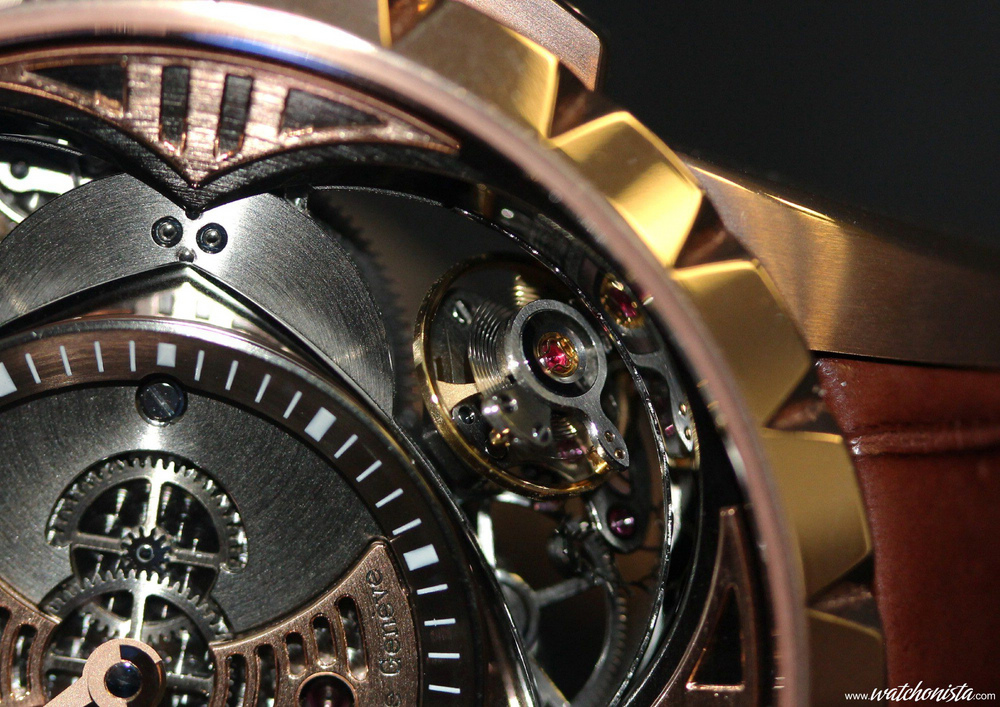
As everybody knows, Abraham-Louis Breguet developed the tourbillon to compensate the effects of gravity on pocket watches when they were worn perpendicularly to the ground…
In a classic movement, the escapement is fixed; but with a tourbillon, it usually completes a revolution around the balance axis in 60 seconds, the most common speed; thus, the effects of earth’s gravitational forces are compensated for the most part.
The tourbillon accompanied the mechanical watchmaking rebirth in the 80’s, only utilized in prestigious complications because of a difficult tuning process and of the great technical skills demonstration it represented; however, a tourbillon was quite useless in a wristwatch’s movement, as the wrist very often sits in intermediate positions, neither vertical nor horizontal…
As mentioned in a recent topic, the tri-dimensional tourbillon is one of the solutions that address this issue…
But this solution, however technically brilliant and aesthetically fascinating, is nonetheless a mere evolution of a technology invented in 1801 and which was not designed for wristwatches.

To go beyond the tourbillon, today Roger Dubuis starts from a blank slate to address the problem of the effects of gravitational forces on a wristwatch’s escapement.
The idea appeared a few years ago: tilting the hairspring- balance looked like a more appropriate solution than the tourbillon (and cheaper from a massive industrialization standpoint). The goal was to maintain the regulating organ parallel to the ground under most circumstances. One obviously thinks of Greubel-Forsey tilted tourbillons.
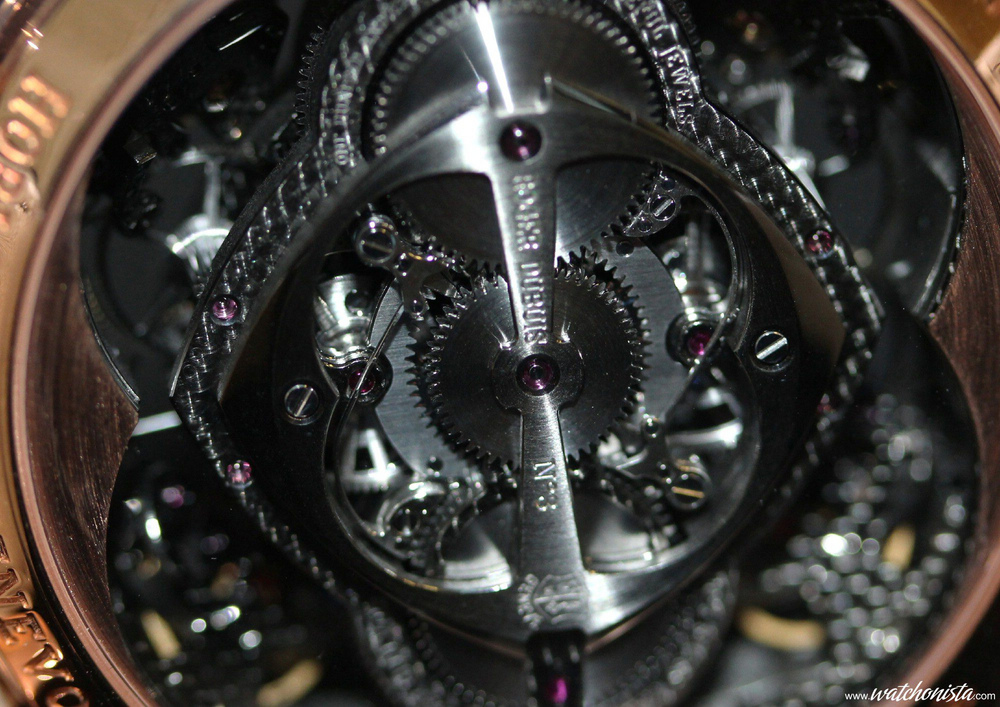
However, before the Roger Dubuis Quatuor, one still utilized the beautiful but old fashioned tourbillons… Especially since tilting the tourbillon was only part of the answer to this issue …
Indeed, this solution is appropriate for the lambda office worker who spends hours typing with his wrist moving between 30° and 45°… But chances are that a fanciful collector leads a more eccentric life than the average watch-lover… His wrist moves in more diverse ways.
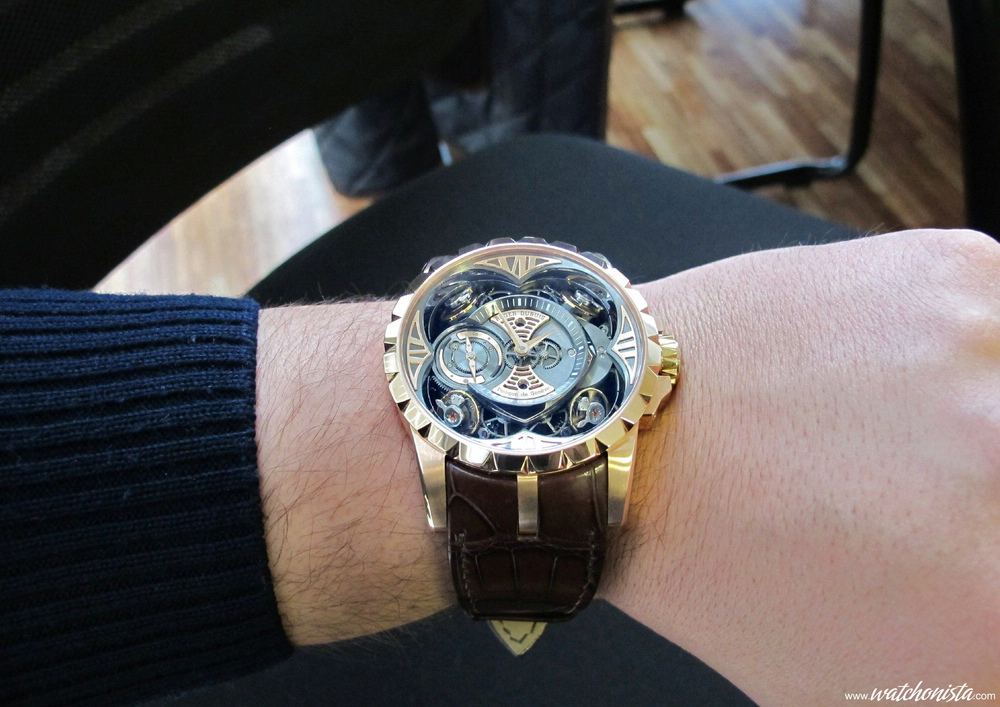
That’s when the Quatuor’s system comes into the picture. The watch does not feature a single classic tourbillon escapement, but four fixed escapements! They sit in each one of the four corners of the dial, tilted at an angle of 45° from the surface of the dial, all of them oriented in a different direction.
Straight lines starting from each of these devices would cross at the tip of an isosceles pyramid.
Hence, independent from the position of the wrist, there will always be hairspring-balances more or less parallel or perpendicular to the ground. Obviously, the Earth’s gravitational field will influence each of the escapement blocks differently.

That’s why a device familiar to car-lovers is utilized: the differential. When positioned between two parallel wheels linked through a perpendicular gear, it regulates their respective rotations.
In watchmaking, the device is noticeably different. In this case, the signal delivered by the four escapements is coordinated by three differentials: two of them are sitting on the intermediate wheels and the third one is positioned on the hour gear train central wheel.

The general point of the system is that the signals will auto-regulate to obtain an average time indication from the four escapements set at 4Hz.
If it is an alternative to the tourbillon, it is also an alternative to high-frequencies, which allow for the sampling of shortest intervals of time, hence providing a more accurate signal. In the case of the Quatuor, the signal is also more precise than that of a single 4Hz escapement…
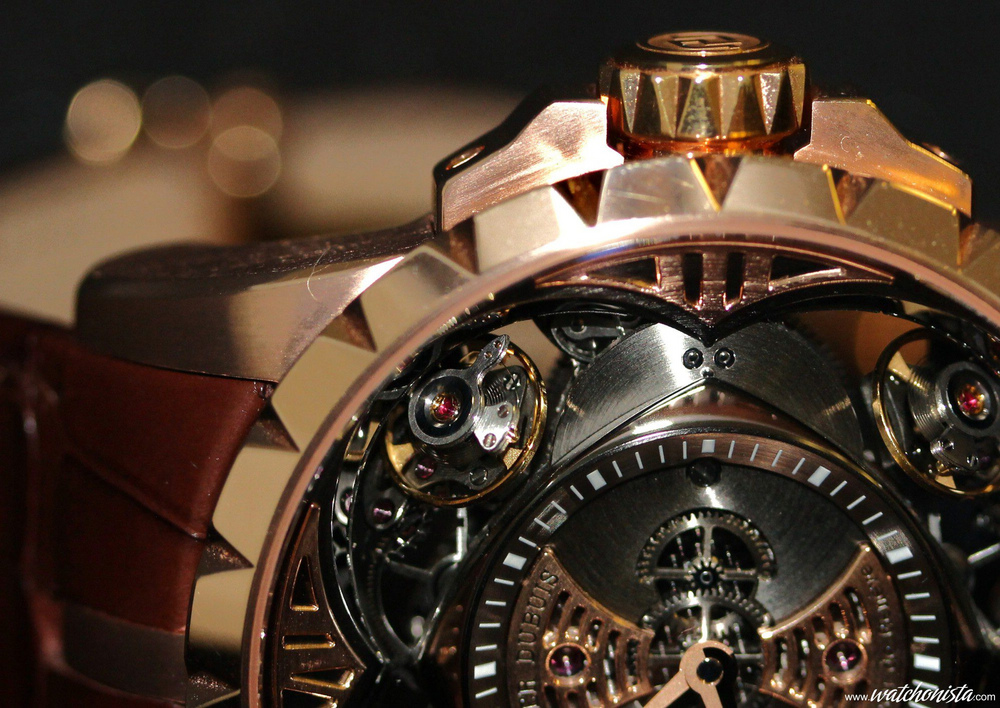
It is difficult to get more technical data from Roger Dubuis’ Communication department, since the implementation of the differentials is under pending patents; and the administrative process is still not complete…
A more classic feature is that a differential is also mounted on the winding axle and on the Power-reserve display system.
Of course, such a technical overabundance has a cost: Bulk. The movement is 163/4 lignes in diameter (about 37.7mm, a classic size, like a Unitas), by 10.6mm in thickness (less common).
If a movement of this diameter can be cased-in with a shoe horn into a 43mm watchcase, the latter must be 17mm of minimum thickness to accommodate the 10.6mm of the mechanism… Namely, the unharmonious proportions of a Rolex Deep-Sea.
Therefore, Roger Dubuis’ designers opted for a wider case (48mm, rose gold) in order to preserve the watch’s aesthetical balance. It is a success, as the piece does not look too thick; however, when worn on the wrist, it’s bulky; it is definitely a man’s watch!
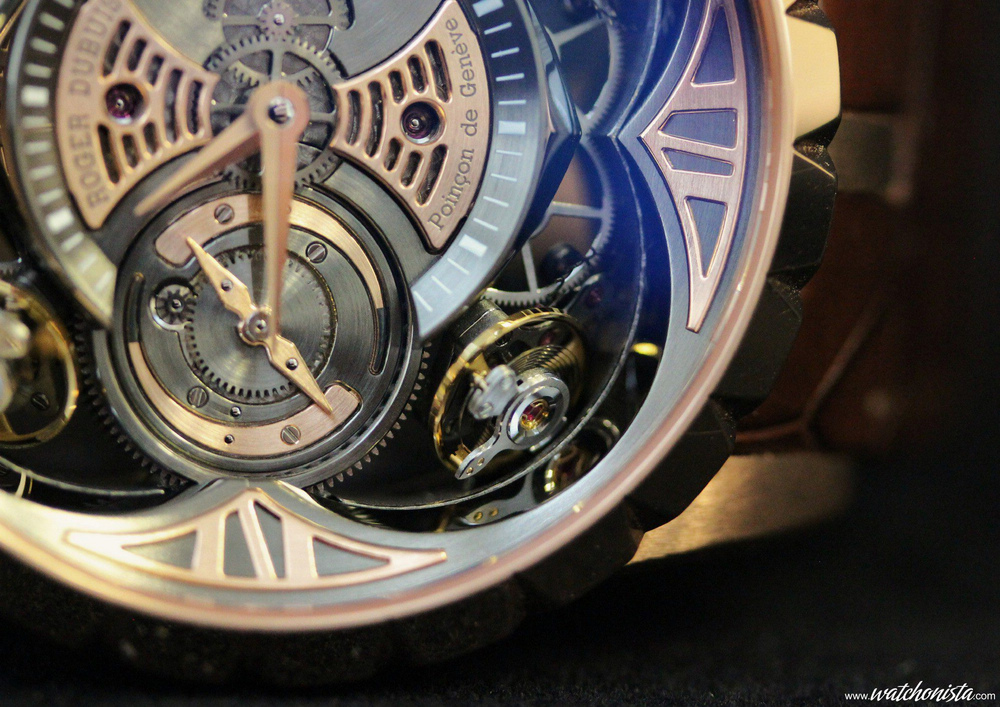
Of course, the dial is an absolute delight for the open-watch lovers! While the skeleton shows the four regulating organs, the work of this horologic cathedral can be partially observed through the caseback. My only regret is the gold inlay on the chapter ring and at the center of the dial, which tends to upstage the balance wheels, when nothing should impair the sight of their ballet. Especially since the brass on the blackened bridges provides enough contrast.
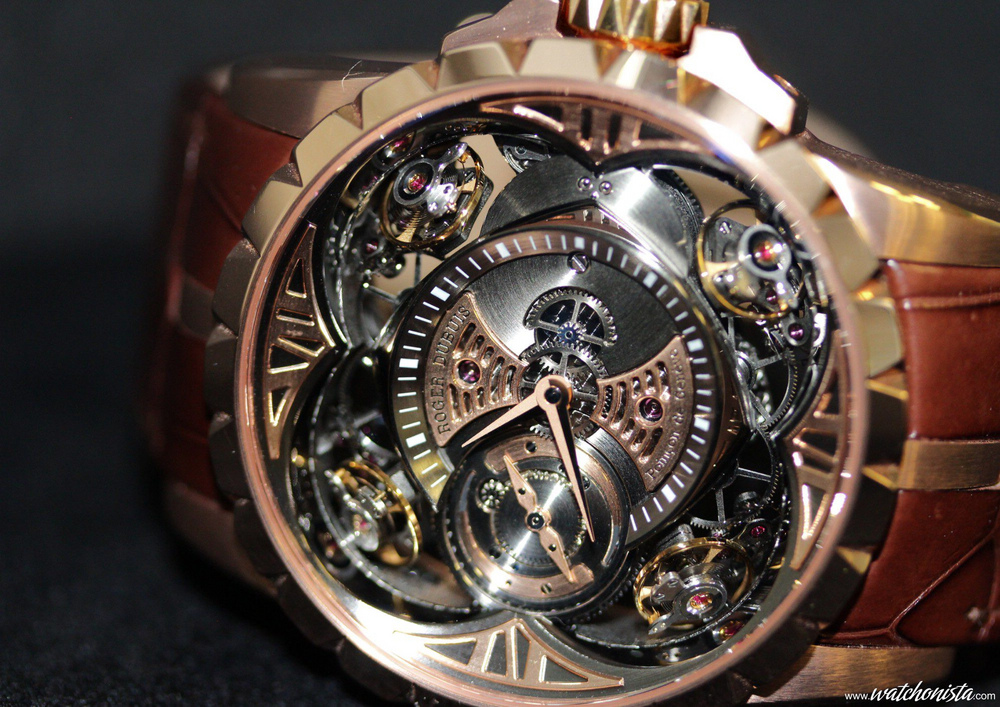
No matter. This Excalibur Quatuor is available in another version. And one can speculate that this movement will be utilized in future Roger Dubuis collections…
Because it would be a shame to only produce 88 copies of this innovation. At any rate, it is the most innovative alternative designed to compensate the detrimental effects of gravity upon a wristwatch.
We’ve also had the chance to take pictures in avant-premiere of the new Excalibur Chronograph 42mm blue dial, a more reasonable and more classic watch which also features exceptional finishes. While for many observers the previous Excalibur collections were mere caricatures of Show-off watches, this new model, in contrast, is a paragon of aesthetical balance!

The watch case measures 42mm, the piece is powered by the caliber RD681 (4Mhz, 52h power-reserve), a version “with date” of the 680 which we had the opportunity to photograph in the Monegasques. This magnificent chronograph movement features a layered architecture which provides it with lots of personality and showcases “Geneva Hallmark” finishes.
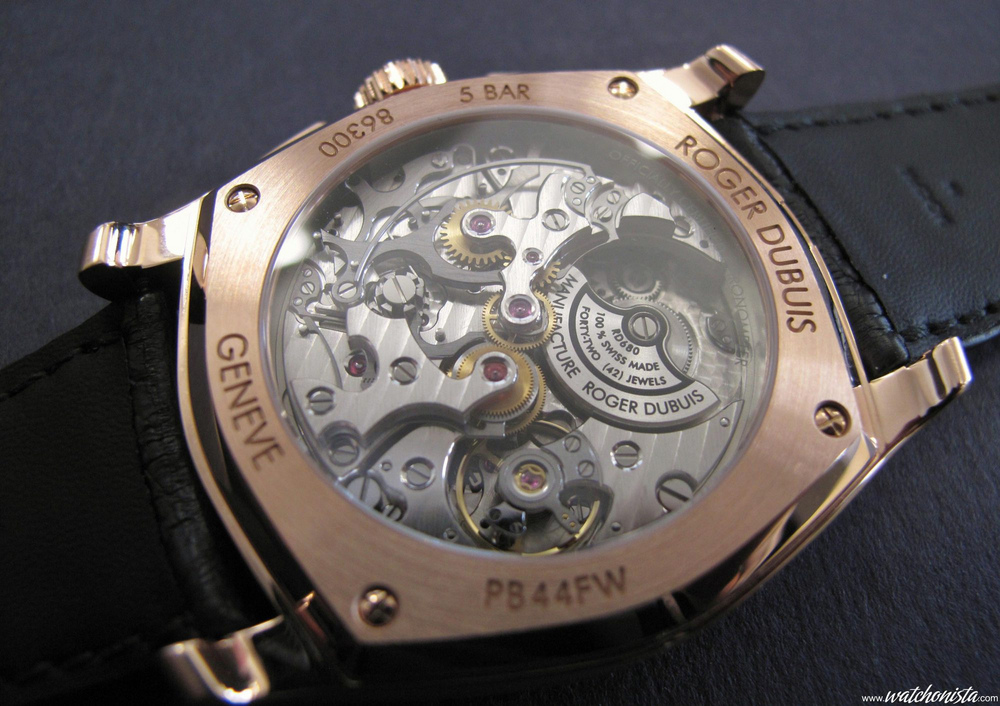
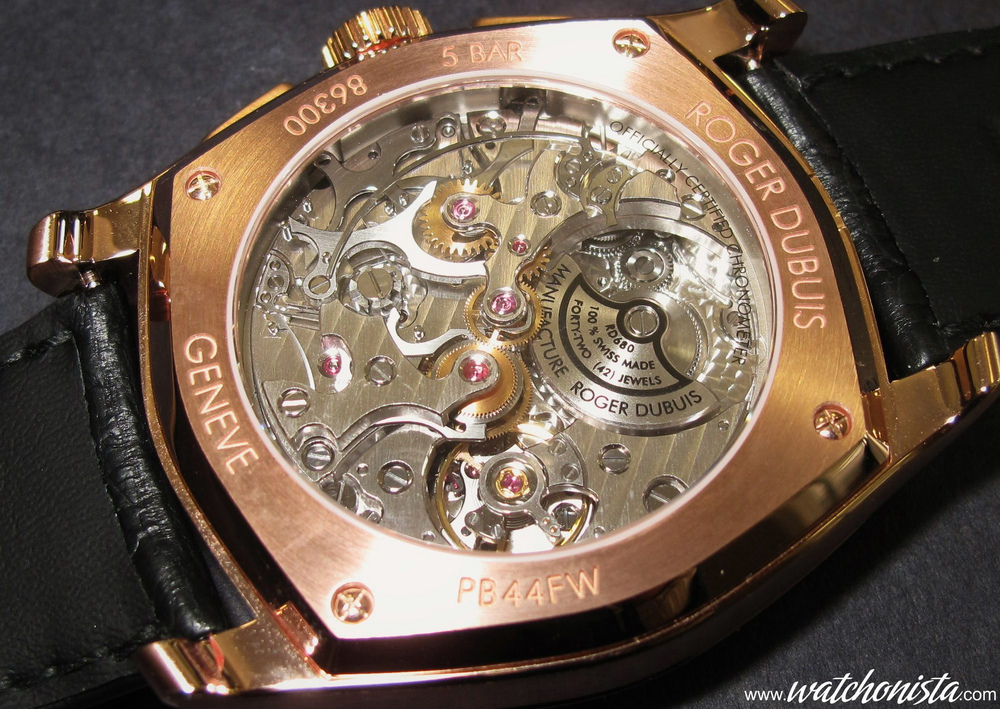
The only (micro-) flaw: the micro-rotor is still silkscreened when one would have expected electroplated gold letters to perfect the demonstration.
We’ve already said that the caliber is quite fabulous, but the true novelty on this watch is of course its look.
First of all, the 42mm diameter is perfect for a sports-chic watch, not too large, not too small, and on top of it the piece remains thin (the caliber measures 6.3mm in thickness, to be compared to the 8mm of a 7750).
The blue dial preserves the charm of the Excalibur 42mm Lapis Lazuli. If it is less colored and demonstrative, it is more polyvalent and discreet. Its color varies between midnight blue and black, with royal blue reflections when the sun’s rays hit its surface.

The layout of the counters and their large size are perfect and enhance the dial’s color, while providing an old fashioned charm to the piece. The date aperture could probably have been added in a more appropriate way and its disk could have been blue, which would have allowed it to meld better in the background.

The watch is wearable for many occasions, with a pair of jeans or a three-piece dress suit. In short, Roger Dubuis’ works get better and better, as every new piece is more mesmerizing than the previous one.
If this piece’s beauty recipe is the same as that of La Monegasque, its style is indeed different, probably a bit sportier…
Objectively, this is a magical chronograph: a mesmerizing look, an exceptional Hallmark of Geneva caliber, and most of all, at a reasonable price (about 25.000CHF) thanks to a stainless steel case. A key alternative to many more mythical chronographs.
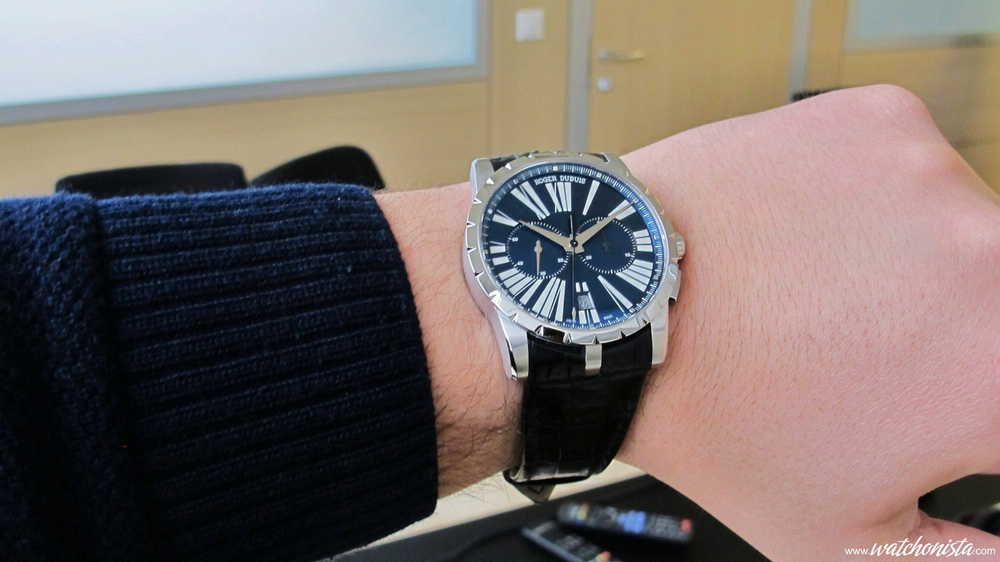
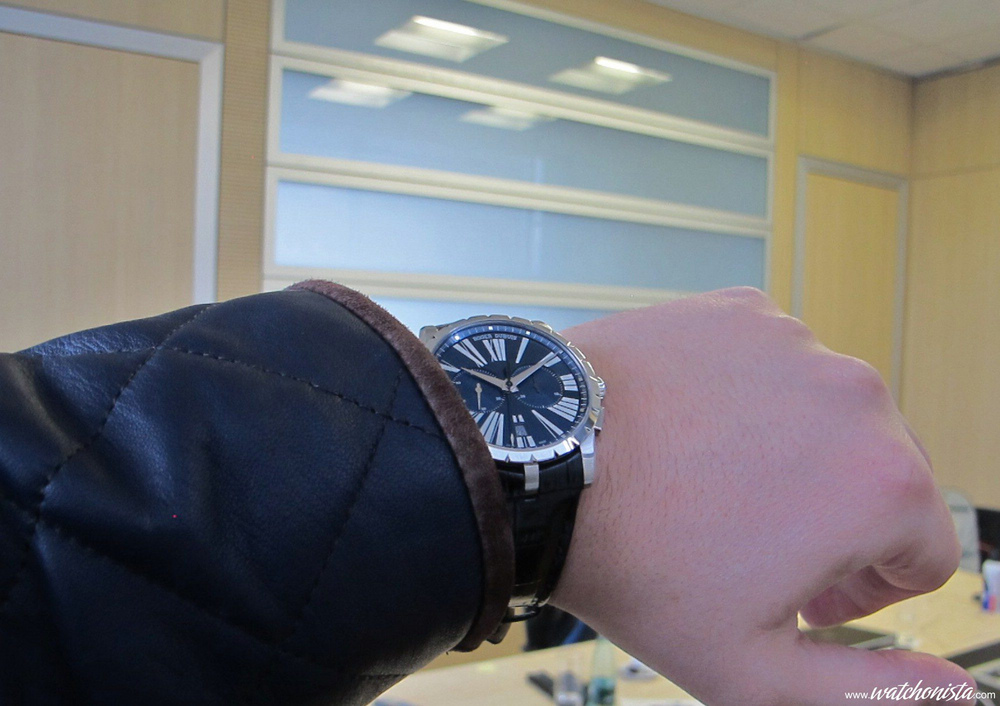
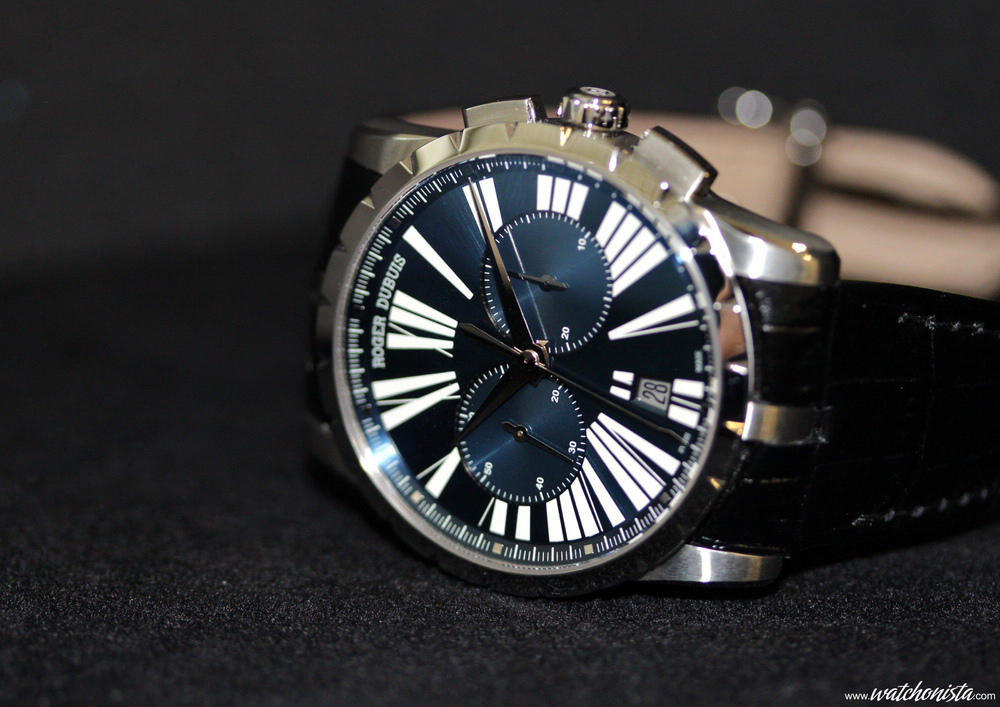
















 Похожие темы
Похожие темы